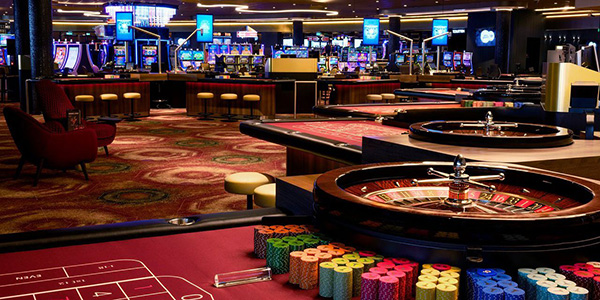- 카지노
-
카지노사이트
- 파라존코리아
- 헤라카지노
- 랭크카지노
- 뉴헤븐카지노
- 썬시티카지노
- 월카지노
- 아인카지노
- 솔카지노
- sm카지노
- 코인카지노
- 월클카지노
- 미라클카지노
- 마카오카지노
- 대왕카지노
- 메리트카지노
- 더킹카지노
- 토스카지노
- 체스카지노
- 아톰카지노
- 하이리밋슬롯
- 슈퍼카지노
- 짱구카지노
- mgm카지노
- 태양성카지노
- 프롬카지노
- 358카지노
- 제왕카지노
- 크리스탈카지노
- 벳인카지노
- 벳페어카지노
- 다루카지노
- 벳플렉스카지노
- 홈카지노
- 쿨카지노
- 헤븐카지노
- 럼피쉬카지노
- 리버카지노
- 샌즈카지노
- 얀카지노
- 본즈카지노
- 스테이크카지노
- 언택트카지노
- 미스터플레이슬롯
- 카지노사이트-더킹카지노
- 카지노사이트-파라오카지노
- 카지노사이트-랭크카지노
- 바카라
-
바카라사이트
- 바카라사이트-라바카지노
- 바카라사이트-조개카지노
- 바카라사이트-믹스믹스토토
- 바카라사이트-비타민카지노
- 바카라사이트-볼트카지노
- 바카라사이트-산타카지노
- 바카라사이트-프리카지노
- 바카라사이트-슬롯존
- 바카라사이트-골드시티카지노
- 하반기 최고의 바카라사이트 순위 추천
- 바카라사이트-랜드마크카지노
- 바카라사이트-소닉카지노
- 바카라사이트-유로스타카지노
- 바카라사이트-좋은느낌카지노
- 바카라사이트-이지카지노
- 바카라사이트-빅투카지노
- 바카라사이트-abs카지노
- 바카라사이트-라카지노
- 바카라사이트-양귀비카지노
- 바카라사이트-마성카지노
- 바카라사이트-플뱅카지노
- 바카라사이트-터미널카지노
- 바카라사이트-퀸즈카지노
- 바카라사이트-케이카지노
- 바카라사이트-벳위즈카지노
- 바카라사이트-핑카지노
- 바카라사이트-비바카지노
- 바카라사이트-아리아카지노
- 바카라사이트-백호카지노
- 바카라사이트-플래티넘카지노
- 바카라사이트-플레이카지노
- 바카라사이트-888카지노
- 바카라사이트-골드피쉬카지노
- 바카라사이트-스카이카지노
- 바카라사이트-하이브카지노
- 바카라사이트-붐카지노
- 바카라사이트-빅토리카지노
- 바카라사이트-클레오카지노
- 바카라사이트-알파벳카지노
- 바카라사이트-아벤카지노
- 바카라사이트-m7카지노
- 바카라사이트-fm카지노
- 바카라사이트-소울카지노
- 바카라사이트-더존카지노
- 바카라사이트-에볼루션라이트닝카지노
- 바카라사이트-골드카지노
- 바카라사이트-달마카지노
- 바카라사이트-007카지노
- 바카라사이트-샹그릴라카지노
- 바카라사이트-밀리언클럽카지노
- 바카라사이트-예스벳88카지노
- 바카라사이트-천하카지노
- 바카라사이트-맥스카지노
- 바카라사이트-카심바카지노
- 바카라사이트-다이아몬드7카지노
- 바카라사이트-플러스카지노
- 바카라사이트-퍼스트카지노
- 온라인카지노
- 카지노 먹튀검증
- 에볼루션카지노
-
카지노게임
- 카지노-드래곤타이거-분석
- 카지노-룰렛-확률
- 카지노-룰렛-용어
- 카지노-룰렛-전략
- 카지노-룰렛-규칙
- 카지노-슬롯머신-이기는-방법
- 카지노-슬롯머신-종류-총정리
- 카지노-슬롯머신-환수율-rtp
- 카지노-슬롯머신-용어
- 카지노-슬롯머신-규칙
- 카지노-슬롯머신-역사
- 카지노-식보-예측-배팅법
- 카지노-식보-규칙
- 카지노-식보-용어
- 카지노-android-앱-google-play구글플레이어-인기-무료-카지노-게임-lotsa
- 프라그마틱플레이-도그하우스
- club-vegas-라스베가스-슬롯-머신-카지노-게임-bagelcode
- 다이사이게임-유래-특징
- 다이사이-게임방법-지급방법
- 포커-규칙
- 포커의-역사
- 블랙잭-게임
- 카지노호텔
- 카지노게이밍
- 밤문화
- 토토사이트
-
트랜드
- 코스닥, 코스피 상장 기업 IPO(기업공개) 공모주일정
- AI 챗봇(AI Chatbot)
- 코스닥 코스피 상장 기업 ipo기업공개 공모주일정 2023 09 06
- 코스닥 코스피 상장 기업 ipo기업공개 공모주일정 2023 09 19
- 애플 ios 17 전격 발표 업데이트 무엇이 바뀌었을까요
- 코스닥 코스피 상장 기업 ipo기업공개 공모주일정 2023 09 25
- 코스닥 코스피 상장 기업 ipo기업공개 공모주일정 2023 10 05
- 최신 2023년 10월 코스닥 코스피 상장 기업 ipo기업공개
- 2023년 10월 둘째주 공모주 청약 일정
- 코스닥 코스피 상장 기업 ipo기업공개 공모주일정 2023 10 18
- 2023년 10월 셋째주 공모주 청약 일정
- 2024년 1월 공모주 청약 일정
- 비트코인 전망 2024년, 2025년, 2050년 가격 예측
- 공모주 청약이란 초보자 가이드라인
- 2024년 에이피알 공모주 청약 결과 따따블 로또 가능성
- 주식의 정의 - 채권과의 차이점 가이드
- otc 장외거래 및 otc 마켓: 증권 시장
- 주식 장기 투자 전략 가이드 장기 보유의 장점
- 안전한 카지노사이트 시장의 미래: 2025년 온라인 카지노 기술
- 로그인
팝업레이어 알림
팝업레이어 알림이 없습니다.Poker is a series of card games in which players bet on which cards are best according to the rules of a particular game in a similar way to this ranking. The earliest form of the game was played with 20 cards, but today it is usually played with a standard deck, but countries with common short packs can play with 32, 40, or 48 cards. Therefore, poker games vary depending on the configuration of the deck, the number of cards played, the number of cards processed up and down, and the number shared by all players, but there are rules related to one or more bets.Here?
In most modern poker games, the first bet begins with more than one player forcing betting (blind or anteater). In standard poker, each player bets according to the ranking they think their hands are valuable compared to other players. Then, each player will match or "call" the maximum previous bet, and it will proceed clockwise because they will have to lose all additional involvement in the hand and the amount they have bet so far. Players who match the bet may "rise" the bet. The betting round ends when all players call or fold the last bet. When all but one player folds in one round, the rest of the players collect pods without having to show their hands. Even after the final betting round, if more than one player remains in the competition, a showdown will take place, and the player with the winning hand will take the pod. Here?
Except for early forced bets, money voluntarily enters the pot only by players who believe that betting has positive expected value or try to bluff other players for various strategic reasons. Thus, while the results of any particular hand involve considerable opportunities, players' long-term expectations are determined by their actions selected based on probability, psychology, and game theory.Here?
Poker has grown in popularity since the early 20th century and has transformed from recreational activities limited to a small group of enthusiastic fans into activities widely popular with both participants and spectators, including online with millions of dollars in tournament prize money.
Poker Contents
Poker History
While the exact origin of poker is a controversial topic, many game scholars cite French game Fork and Persian game Asnas as early inspiration as possible. For example, in R.F., the complete foil of the 1937 poster. Poster wrote, "The first poker game in the United States is the Persian game of Asnas, without a doubt, giving each player five cards in a 20 card pack." However, in the 1990s, the concept of Forker as a direct derivative of Asnas began to be challenged by game historians, including David Pallet. But what's certain is that poker became popular in the southern United States in the early 19th century because gambling river boats around the Mississippi River and New Orleans helped spread the game in the 1830s.Here?
In contrast to this poker version, the 7-card stud appeared in the mid-19th century and was widely spread by the US military. It has become a major product in many casinos since World War II and became popular with the advent of the poker world series in the 1970s. Here?
Texas Hold'Em and other community card games began to dominate gambling scenes over the next few decades. Poker television increased the popularity of games, especially during the millennium transition, and a few years later, between 2003 and 2006, caused a poker boom. Today, this game has become a very popular entertainment around the world.
Poker Gameplay
In a casual game, the right to hold hands typically rotates among players and is marked with a token called a dealer button (or buck). In casinos, house dealers handle cards in each hand, but buttons (typically white plastic disks) rotate clockwise between players to indicate nominal dealers to determine the betting order. The card is placed clockwise around the poker table one at a time. Here?
Usually, more than one player is forced to make a bet. Usually, you have to make a bet or make a blind bet (sometimes both). The dealer shuffles the cards, the player sitting in the chair moves to the right cut, and the dealer delivers the appropriate number of cards to the player one at a time, starting from the left side of the player. The card can be processed up or down the face depending on the variation of the poker play. After the first deal, the first of several betting rounds begins. Between rounds, players' hands often develop by handling additional cards or replacing previously handled cards. At the end of each round, all bets gather in the central pot. Here?
If one player bets in the betting round, no opponent calls (match) the bet, instead, all opponents fold, fold their hands immediately, award a pot to Better, and show the card. This is what makes bluffing possible. Bluff is a major feature of poker and distinguishes it from other competing games and other games using poker hand rankings. Here?
At the end of the final betting round, if more than one player remains, there will be a showdown in which the players reveal their previously hidden cards and evaluate their hands. The player with the best cards wins the pod according to the poker variation in the game. The poker hand consists of five cards, and in variations where players can use more than five cards, only the best combination of five cards is calculated. There are 10 different types of poker hands, for example straight distance and 4 types.
Poker Variants
There are various types of poker, all of which follow similar game patterns and generally use the same hand ranking layer. There are four major variants that are largely classified into card trading and betting protocols.
Straight
Each player is given a complete loss, and the players are allowed to bet, raise, and raise again in one round. This is the oldest poker family. The root of this game is a game called Primero, which developed into a game of very popular gentlemen around the time of the American Revolutionary War and is still enjoyed in England today. In some cases, five cards are used in a straight line, but poker is almost always played in a more complex form for additional strategies.
Stud poker
The card is processed in the form of a pre-combination of face down and face up rounds, or street, and bets are made for each round. As the number of poker increased from three to five, there were many cases of card competitions, one at a time. Today's most popular stud variant, the 7-card stud, gives each player two additional cards (three face down and four face up), which allows you to make the best 5-card cards.
Draw poker
Five draws: A complete defeat to each player. Each player then has to anteater in the pot. Then they can look at the card and bet accordingly. After betting, the player can throw away up to three cards and take a new card on deck. Then, another betting round will be held. Finally, each player has to show his or her card and the player with the best cards wins.
Community card poker
Community card poker, also known as "flop poker," is a variant of stud poker. Participants are treated with incomplete hands of face-down cards, followed by community cards facing over multiple faces in the center of the table, and each card can be used by more than one player to make five cards. Texas has them and Omaha is two well-known variants of the local card family. Here?
There are several ways to define the structure of betting in the poker hand. The three most common structures are known as "fixed limits", "pot limits", and "no limits". Fixed-limit poker requires betting and fundraising at a standardized amount. For example, if the bet you need is X, the initial better can only bet X, and if the player wants to bet, he can only raise X. In pod limit poker, players can bet or raise up to the size of their pods. When calculating the maximum increase allowed, all previous bets and calls, including the call of the intended impression, are added to the pot first. The laser can then raise the previous bet by the amount of pot. In unlimited poker, players can bet their entire betting stack at the time when betting is allowed. In all games, if the player does not have enough betting chips to bet on, "all-in" can reduce the amount of chips left. Here?
A typical poker game awards the highest hand a pod according to the standard ranking of the poker hand, but there is also a variation in which the best hand, that is, the hand that awards the pod, is the lowest hand instead. The best hand in these games includes the lowest card than the highest card. Some variations may become more complex depending on whether hands such as flush and straight lines are considered in the hand rankings. There is also a game in which the highest and lowest hands divide the pot, known as the "high and low split" game. Here?
Other games using poker hand rankings can also be referred to as poker. Video poker is a single-person video game that functions very similar to a slot machine.; Most video poker machines play drawer poker where players bet, hands are processed, and players can discard and replace cards. The payment depends on the hand and the player's initial bet after the draw. Here?
Streep poker is a traditional poker variation in which a player takes off his clothes when he loses a bet. Since strip poker relies only on the basic mechanism of round betting, it can be played with all forms of poker. However, it is usually based on a simple variation with few betting rounds, such as card draw. Here?
Another game that has a poker name but has a very different way of playing is called Acey-Deucey or Red Dog Poker. This game is more like Blackjack in layout and betting; each player bets against the house and then receives two cards. In order for the player to win (after getting a chance to raise the bet), the third card traded must have a value between the first two cards. Payment is based on the probability that this is possible based on the difference between the values of the first two cards. Other poker-like games against the house in casinos include three card poker and pygo poker.




























